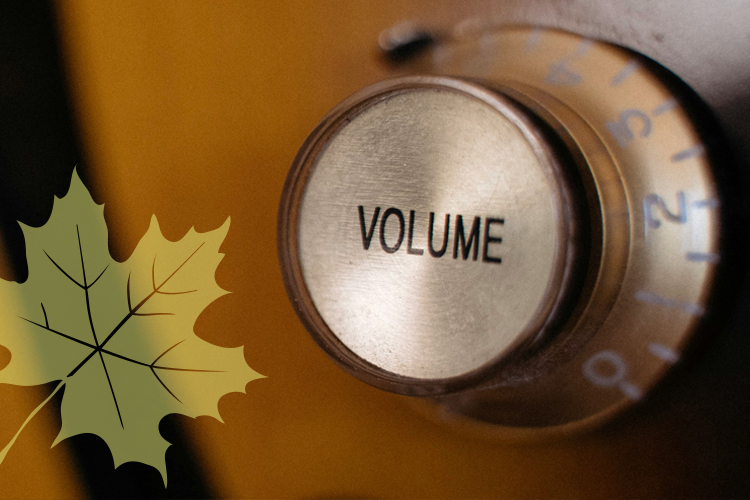Parkinson’s Disease, a progressive neurodegenerative disorder, is often associated with symptoms such as tremors that may start in the hands, muscle rigidity, and postural instability. However its effect on speech and communication can have a significant impact on the lives of those living with Parkinson’s and their loved ones. Since 1987, a unique and intensive speech therapy program, LSVT LOUD, has been shown to be an effective treatment for improving the communication of individuals with Parkinson’s.
Dianne Warns, MS CCC-SLP, serves as the Speech-Language Pathologist at Clermont Park and has been an LSVT LOUD Certified Clinician since 2016. She has seen first-hand the improvement in speech for clients who participate in LSVT LOUD and the increase in confidence and well-being that come as a result. Thinking of a specific client that she worked with, Dianne shares, “She changed my life as a clinician. To see the change and effect that LSVT LOUD had on her, it was so surprising to me.”
To understand how this speech treatment supports speech and communication, let’s first understand Parkinson’s Disease.
What is Parkinson’s Disease?
Parkinson’s disease (PD) is a progressive neurodegenerative disorder characterized by the degeneration of dopamine-producing neurons in the region of the brain crucial for movement control. This loss of dopamine leads to the characteristic symptoms of Parkinson’s, including tremors at rest, bradykinesia (slowness of movement), muscle rigidity, and postural instability.
Although most people associate motor impairment with Parkinson’s disease, non-motor symptoms can also be present in patients. Depression, cognitive decline, sleep disturbances, and autonomic dysfunction (e.g., constipation, orthostatic hypotension) are common and can significantly affect quality of life.
The Effect of Parkinson’s Disease on Speech
One less visible yet profoundly impactful symptom is the disease’s effect on speech and language. Parkinson’s often leads to hypokinetic dysarthria, characterized by a soft, monotone, and often rapid speech pattern. This can make communication difficult and frustrating for individuals with the disease.
Dianne Warns, Clermont Park’s Speech-Language Pathologist, explains that a “feedback mismatch” can also be present with individuals with Parkinson’s. This mismatch affects one’s perception of their speaking volume. One may perceive that they are speaking at an audible volume when they are speaking very softly, and perceive that they are speaking loudly or shouting when they are speaking at a volume that sounds normal to those around them.
Other speech-related issues include reduced facial expressiveness, which can diminish the nonverbal aspects of communication, and difficulties with articulation, which may cause speech to become slurred. These communication challenges necessitate tailored speech therapy interventions to help individuals maintain their ability to communicate effectively.
LSVT LOUD Speech Therapy
LSVT LOUD speech treatment (or Lee Silverman Voice Treatment) was developed more than 35 years ago and is a “gold standard” therapy for helping individuals with Parkinson’s speak at a volume that is easy for others to hear and understand. LSVT LOUD was developed by Dr. Lorraine Ramig and named for a client of hers, Mrs. Lee Silverman, a woman with Parkinson’s Disease whose family wished they could hear better. Through intensive, high effort therapy sessions, LSVT LOUD helps address vocal loudness, the feedback mismatch described above, breath support, and even facial expressiveness.
“The key to this being effective is ‘think loud.’ That is my phrase,” shares Dianne. “If I’m using my loud voice, everything changes. My appearance changes, my facial expression changes, my intelligibility improves. I have slowed my rate of speech down a little bit to be more loud. All of this by saying, ‘think loud.’”
DIANNE WARNS, MS CCC-SLP AT CLERMONT PARK
This video from LSVT LOUD beautifully demonstrates the powerful transformation that this therapy can have on one’s communication.
LSVT LOUD is structured around three core strategies to make the treatment as effective as possible.
- Target: Vocal Loudness (or amplitude). This is built around evidence-based strategies for the brain’s ability to learn and change (neuroplasticity).
- Mode: Intensive Dosage and High Effort. Consistency, intensity, and high effort are key to clients achieving greater success through this therapy.
- Calibration: Generalization. This involves moving from the therapy room to the outside world and adjusting sensory feedback to recognize that one’s loud voice is within a normal range for those listening. “Clients have to feel that effort that they’re using, that perceived effort,” explains Dianne, to know that they are speaking within an audible range.

How Does a Client Quality for LSVT LOUD Treatment?
Prior to beginning the LSVT LOUD program, clients need to complete an evaluation with an Ear, Nose, & Throat doctor, or ENT. The ENT will examine the vocal cords’ appearance and functioning, and look for abnormalities, nodes, bowing, or any other pre-existing conditions that may be exacerbated by the LSVT LOUD therapy.
Once this has been completed and the patient has been approved for this therapy, either the ENT or Primary Care Physician will write an order for the patient to proceed with LSVT LOUD through a certified clinician.
What Do LSVT LOUD Therapy Sessions Look Like?
LSVT LOUD consists of four one-hour sessions per week over four weeks, for a total of 16 intensive, high effort sessions. Additionally, daily homework exercises are essential to experiencing the full benefits of treatment. Throughout therapy, an emphasis is placed on good vocal quality to be sure that one isn’t straining their voice or damaging their vocal folds in the process.
Evaluation
Dianne begins each course of LSVT LOUD treatment with an evaluation to get a baseline of the client’s speech, which allows her to measure progress over the next four weeks. She uses a sound level meter to measure clients’ speaking volume in decibels and measures how long someone can sustain an “aah” sound.
Dianne will also do a cognitive assessment, assess any difficulty swallowing that a client may be experiencing, and ask that the client and a loved one complete an assessment of their perceptions of how the client is doing with their communication.
“In that first session, I’ll have the client help me create ten functional phrases that they will typically use every day,” says Dianne. “This could be, ‘good morning,’ ‘Hi, my name is Bob,’ or ‘I need to take the dog for a walk.’ It can’t be too long or too short.”
Session Exercises
First Half – Each of the 16 sessions begins with the same set of exercises, including the speech volume measurement, sustained “aahs” to measure how long one can hold the sound, pitch increase and decrease exercises, and the functional phrases compiled during the first session.
Second Half – The second half of the session changes from week to week, beginning with a focus on single words and phrases in week one, and moving to sentences in week two, paragraph reading in week three, and, finally, conversational speech in week four.
“I like to find out the client’s interests,” explains Dianne. “Do they like golf or tennis or baking? I will center therapy around that.” From the very start of therapy with single words and phrases in week one, Dianne will focus those words and phrases around the client’s interests.
For week three paragraph reading with a recent client, Dianne says, “I had a client who was interested in golf and the Masters was on. I went and bought a golf magazine so he could read from that magazine.”

“Homework” Exercises
Each session ends with a page of homework assignments for the client to complete, which include the sustained “aahs,” pitch increase and decrease exercises, functional phrases, etc. On the day of therapy, clients will spend five to ten minutes outside of the session working on their homework. On days when they are not doing therapy, they will spend 10 to 15 minutes at two different times of the day.
“Parkinson’s Disease is a lifelong journey. And just like anything else, you have to practice,” shares Dianne. “I encourage clients to incorporate this into their daily life as a habit. Brush your teeth, then do your ‘aahs.’”
Changing Lives through LSVT LOUD
In the eight years that Dianne has been an LSVT LOUD Certified Clinician, she has seen this treatment improve the quality of life of many clients. However, one person always comes to mind when Dianne thinks of the significant impact it can have on one’s communication, confidence, and relationships.
“This client noticed a change in her voice and she started socially isolating herself,” recalls Dianne. “She was not talking on the phone with her best friend, who lived in another state. She was shutting down. She wasn’t going out.”
Dianne and this client embarked on LSVT LOUD therapy. “To see the change and effect that LSVT LOUD had on her, it was so surprising to me. I had never seen it be quite so effective,” Dianne shares. “She practiced every day because she saw the positive effects that it had on her life.”
Dianne marveled as she saw her client regain her confidence and re-engage in the things she had withdrawn from prior to LSVT LOUD therapy. “It was life-changing for her. She started calling her friends again and talking on the phone, she started going on more outings.”
Support for Individuals with Parkinson’s Disease at Clermont Park
Dianne is part of a multi-disciplinary team at Clermont Park that also includes physical and occupational therapists. This award-winning team specializes in treatment for older adults, including those with Parkinson’s Disease, whether on a short-term basis in our Rehabilitation neighborhood or on a long-term basis in our Skilled Nursing neighborhood.
We invite you to contact us or visit our University Hills senior living community to learn more about how Clermont Park can support you.





